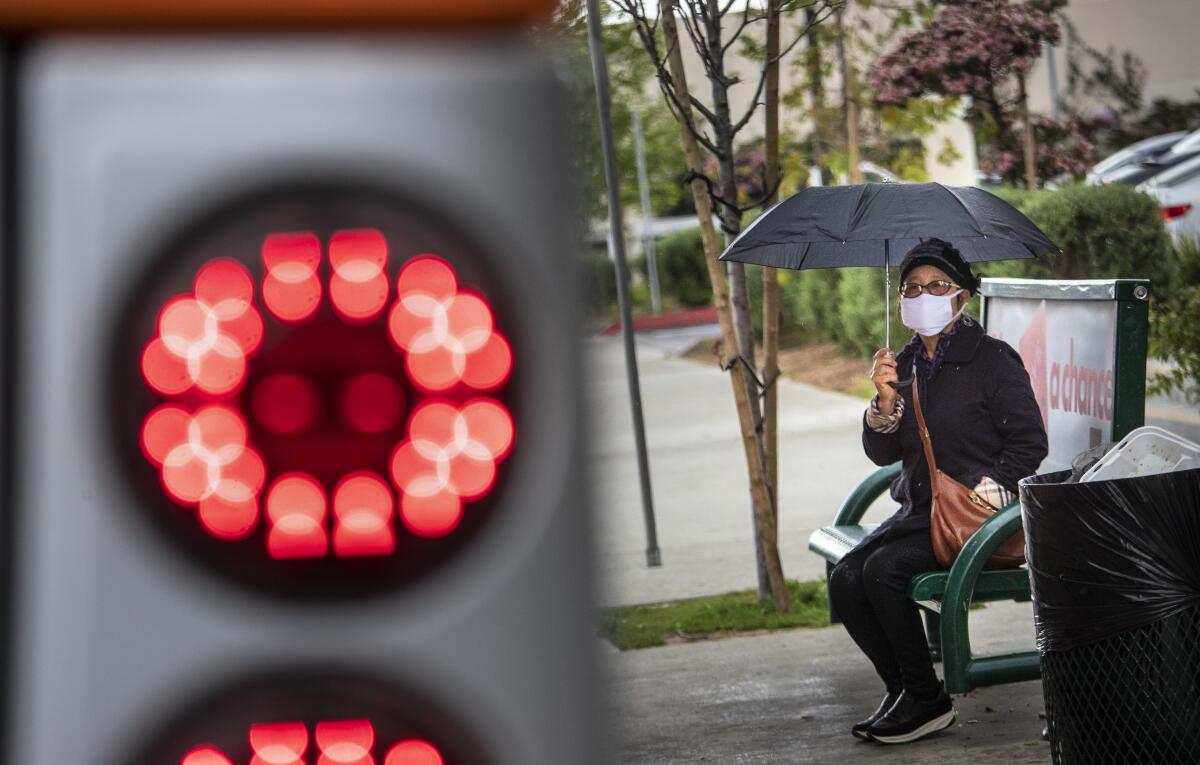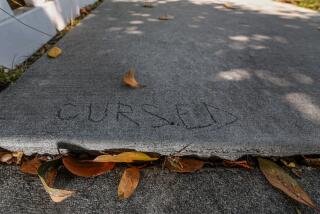Editorial: Give L.A.’s bus riders shelters and benches already

It’s common sense that if we want to cut auto emissions, fight global warming and improve mobility, we have to make riding public transit far more reliable, efficient — and comfortable.
One of the easiest ways to improve bus riders’ experience is to give them a bench to rest on while they wait, covered from the sun and rain, with a video display showing when the next bus will arrive. Yet despite voters in Los Angeles County pouring billions of dollars into transit with sales tax increases, this basic amenity — a bus shelter — is still in woefully short supply.
One reason for the paucity of shelters is the lack of support from some cities’ leaders. Though the Los Angeles County Metropolitan Transportation Authority runs the regional bus system, cities decide whether to install bus shelters at stops and are responsible for the cost. Some cities make shelters a priority, some don’t. And that’s a problem. Only about 25% of Metro’s bus stops have shelters.
The failure to put shelters at every stop shows how little regard Metro and city governments have for bus riders, the majority of whom are low-income people of color who are dependent on transit for mobility. Bus benches and shelters are not optional features. They are essential pieces of the transit infrastructure, especially as the climate warms and we have more extremely hot days. It’s inhumane to make riders bake in the blistering heat.
Los Angeles — the biggest city in Metro’s region with the most bus riders — has a chance to make a meaningful improvement. The City Council will soon consider a new deal designed to get a private partner to install and maintain some 3,000 new transit shelters in exchange for allowing advertising, including digital displays, on the shelters. This time, the city can’t repeat the mistakes of the past.
Twenty years ago, the city entered into an overly optimistic contract with outdoor advertising firm Outfront JCDecaux that was supposed to result in more than 1,000 new bus shelters throughout the city, along with automated toilets and information kiosks, plus $150 million in ad revenue for city coffers.
The deal was a bust. Fewer than 700 bus shelters were installed, and older shelters weren’t replaced (one-third of the city’s bus shelters are now more than 30 years old). When shelters were added, they were placed based on advertising potential rather than riders’ needs. The city has collected only about half of the promised revenue. According to a 2012 audit from then-Controller Wendy Greuel, one issue was the bureaucratic 16-step process, including obtaining the local City Council member‘s approval, that was required to install a shelter. That created unnecessary delays and made each shelter a political decision.
The JCDecaux contract expires at the end of 2021. Transit advocates have called on the city to put bus riders first this time. Some council members and StreetsLA, the department responsible for the streets and sidewalks, have also said that the top priority will be providing shade and shelter to bus riders in the areas of greatest need.
That’s good. Bus shelters should be placed at the stops that have the biggest ridership and the worst heat exposure — regardless of the advertising potential or localized community opposition. There is already some concern, particularly from more affluent neighborhoods, about the prospect of digital advertising, which will be allowed on a portion of the shelters. That’s a legitimate concern, but the protests over digital signage cannot delay much-needed bus shelters.
Other reforms are needed as well. Under the previous contract, half of the advertising revenue was given to council offices, ostensibly to spend on transit projects, sidewalk repairs and beautification-related work but often used to pay council staff. The rest of the ad dollars went into the city’s general fund, which is used for the full panoply of city services.
The money from the new contract should be spent entirely on additional bus shelters and improvements to the surrounding areas — sidewalks, crosswalks, streetlights and safe street design for pedestrians and bicyclists. In short, any revenue should be reinvested in transit- and street-related infrastructure to make the bus-riding experience better. And if advertisements don’t provide enough funds to do the job? Then L.A. and Metro should put up the money needed. It’s about time that transit riders got the shelter they deserve.
More to Read
A cure for the common opinion
Get thought-provoking perspectives with our weekly newsletter.
You may occasionally receive promotional content from the Los Angeles Times.










